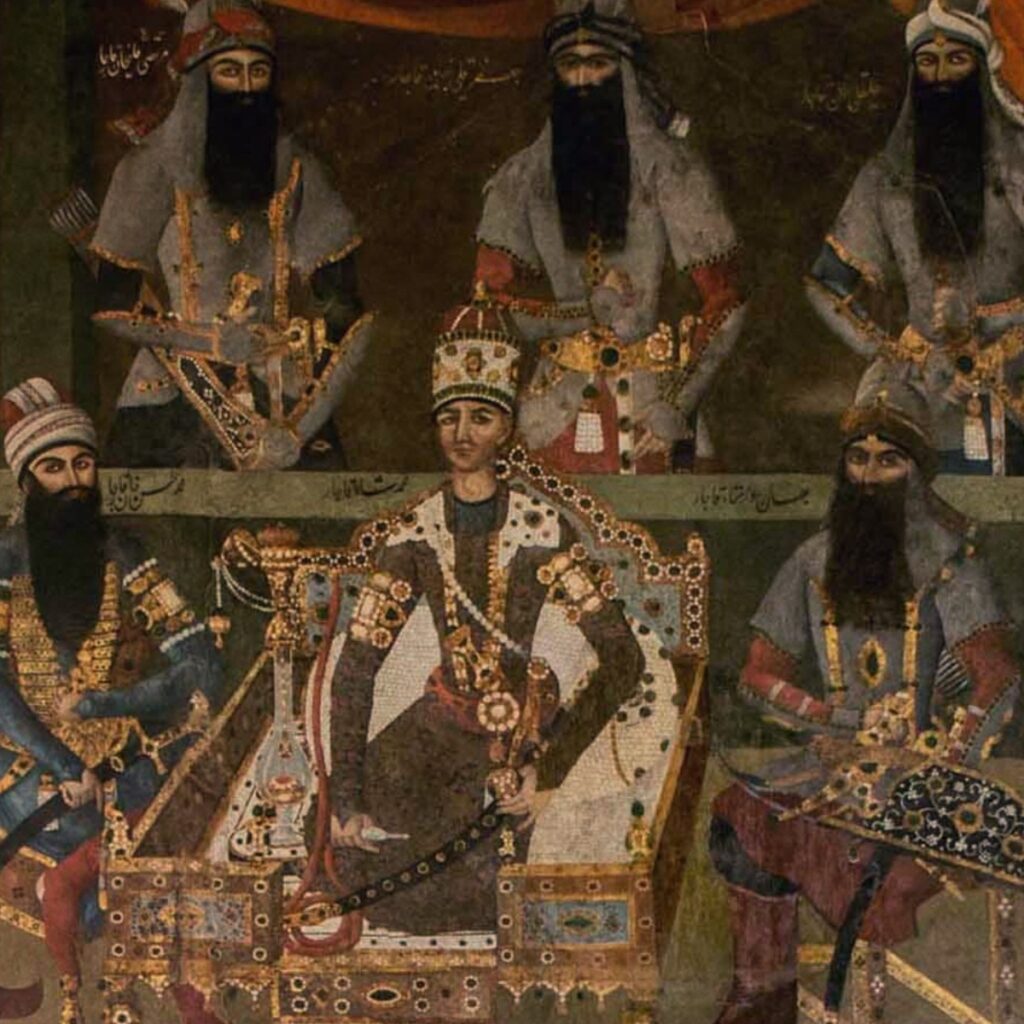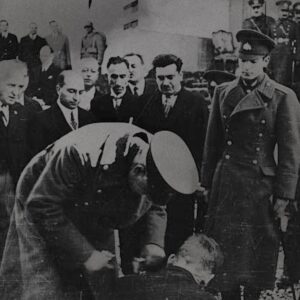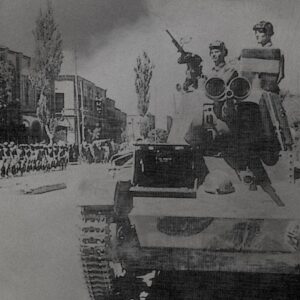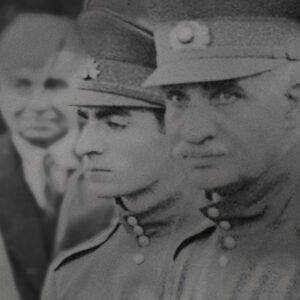The Qajars: Iran’s Unifiers and Their Complex Legacy
The Qajar Dynasty was Iran’s ruling family from 1785 to 1925, following the collapse of the Safavid Empire.
The Qajars ruled during a period of significant change in Iran, including the influence of European powers, technological advancements, and cultural modernization. During the Qajar Dynasty, Iran experienced significant challenges and setbacks. The dynasty faced numerous internal and external threats, including political unrest, economic decline, and foreign intervention. The Qajar rulers were often unable to maintain control over their vast territories and struggled to unify the diverse regions and ethnic groups within Iran.
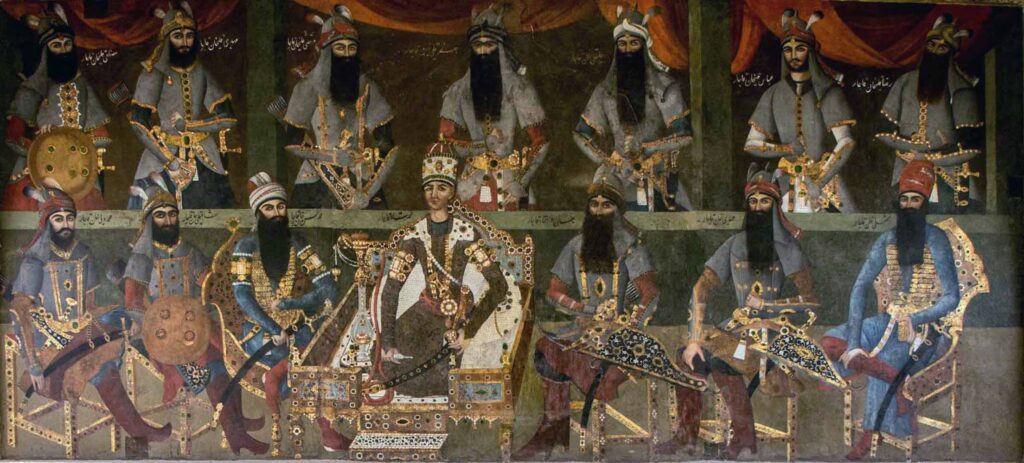
They were famous for making decisions that ultimately weakened the country, such as granting concessions to foreign powers and failing to keep pace with technological and social advancements in Europe and other parts of the world. Factors that contributed to Iran’s relative decline and lack of progress compared to other countries in the region during the 19th and early 20th centuries.
But despite their ultimate failure, the early years of Qajars were filled with brilliance, bravery and honour as they took a broken Iran and unified it back into a great empire.
Before the Qajars: The Fragmentation of Iran Post-Safavid
The Safavid dynasty was one of the most significant empires in Iran’s history, and it existed from the 16th to the 18th century. The Safavid Empire was known for its centralized government, which was led by a powerful monarch supported by a group of bureaucrats and nobles. However, after the fall of the Safavid Empire, Iran’s territory was broken up into smaller states, and the country was plunged into a period of instability that lasted for several decades.
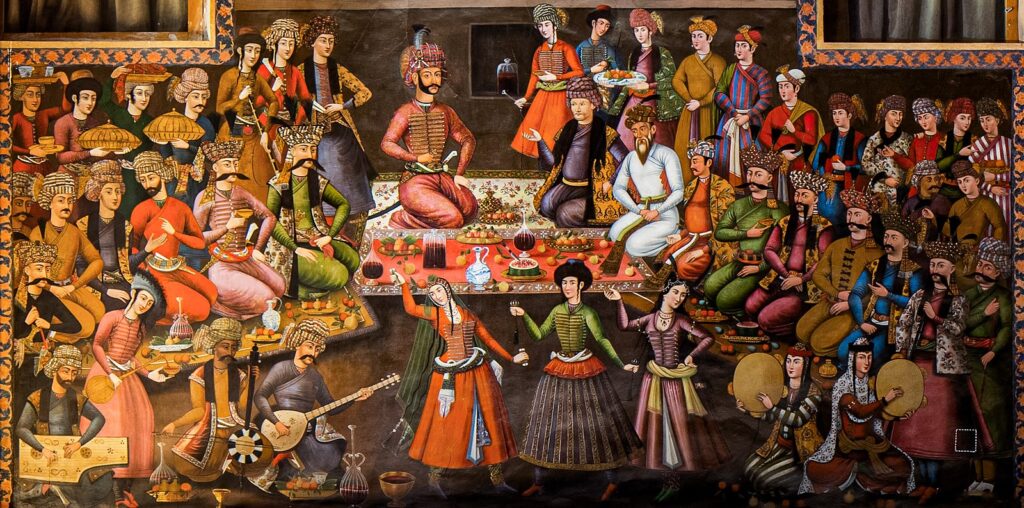
The fall of the Safavid Empire began in the early 18th century when the empire faced numerous challenges, including economic decline, corruption, and military defeats. The Safavid Empire was weakened by a series of wars with the Ottomans, which drained the empire’s resources and left it vulnerable to attacks from other powers. In addition, the Safavid Empire was also plagued by internal conflict, as different factions within the government vied for power and influence.
Due to these challenges, the Safavid Empire began to fragment, and its territory was gradually broken up into smaller states. The first of these states was the Afsharid Empire, which was established in 1736 by Nadir Shah. Nadir Shah was a military commander who rose to power during the decline of the Safavid Empire, and he was able to unify the country under his rule for a brief period. However, after Nadir Shah died in 1747, the Afsharid Empire quickly fell apart, and Iran was once again plunged into a period of instability.
After the collapse of the Afsharid Empire, Iran was again divided into a number of smaller states, each of which was ruled by a different leader. These states included the Zand Dynasty, which was established in 1750 by Karim Khan Zand, and the Qajar Dynasty, which was established in 1794 by Agha Mohammad Khan Qajar. The Zand Dynasty was able to establish a stable government in Iran, and it was known for its patronage of the arts and literature.
Agha Mohammad Khan Qajar: From Tribulation to Triumph
Agha Mohammad Khan Qajar’s origins were steeped in turmoil. Born into the Qajar tribe in 1742, amidst the disintegration of Persia’s Safavid Empire, Agha Mohammad Khan’s early life was marked by immense hardship.
The Zands and the Qajars were two powerful Turkic tribes vying for dominance in the power vacuum left by the declining Safavids. Their rivalry stemmed from several factors, including competition for land and resources, differing political ambitions, and historical grievances.
The Zands, under the leadership of Karim Khan Zand, had emerged victorious in the initial struggle for power, consolidating their control over much of Iran. This left the Qajars, particularly Agha Mohammad Khan, deeply resentful and determined to regain their lost influence.
As a young boy, he was captured by the rival Zand dynasty and subjected to the brutal practice of castration – a deliberate attempt to extinguish any future claim to power and lineage. This physical and emotional trauma undoubtedly shaped Agha Mohammad Khan profoundly.
However, instead of succumbing to despair, it seems to have ignited an unyielding ambition within him. He channelled his pain and humiliation into a steely resolve, vowing to not only survive but to one day achieve ultimate power.
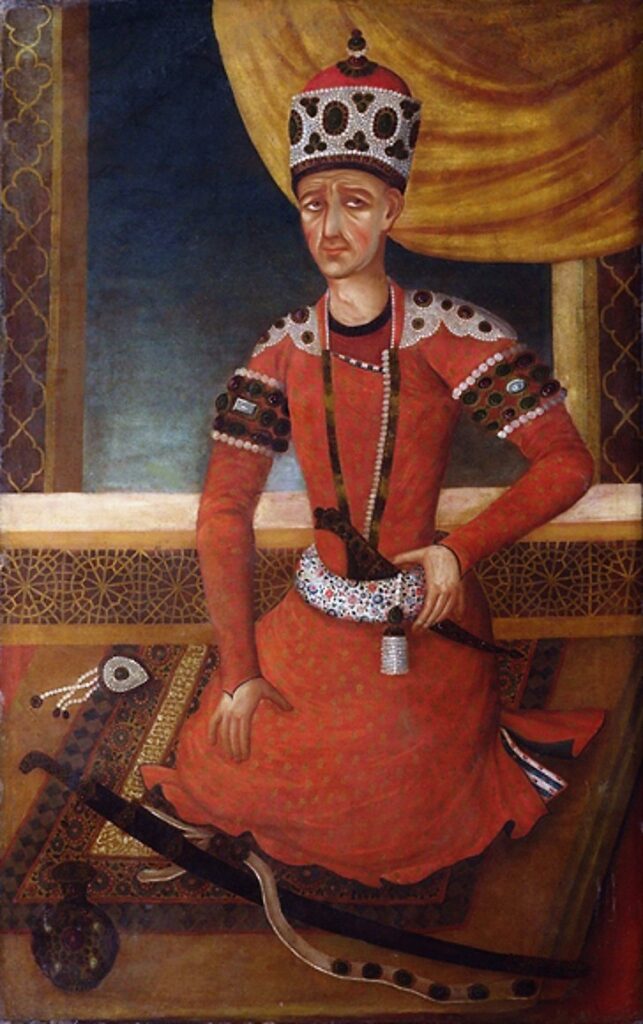
After the death of Karim Khan Zand, a relatively benevolent ruler, Iran once again fractured into warring factions. Local chieftains, vying for territory and power, painted a landscape of bloodshed and instability. This was Agha Mohammad Khan’s opportunity. Possessed of unmatched ruthlessness and strategic cunning, he saw in the chaos a chance to finally seize control over a broken empire.
Agha Mohammad Khan Qajar embarked on a relentless reunification campaign driven by two powerful forces—unyielding ambition and a thirst for vengeance. His armies swept through Iran, propelled by a mix of military prowess and calculated brutality. Cities that dared resist were met with horrific reprisals, designed to instill fear and ensure swift capitulation. One by one, his rivals fell–some were defeated in battle, while others were ruthlessly eliminated through treachery and assassination.
He eliminated the last of the Zand dynasty in 1794, a symbolic victory marking the end of an era. Yet, his coronation as Shah in 1796 would be the true proclamation of the Qajar dynasty’s absolute rule.
Consolidation and Conflict: The Iron Rule of Agha Mohammad Khan
Agha Mohammad Khan Qajar had forged a unified Iran from the ashes of chaos. But his brutal reign resembled a house built on sand. While the surface displayed a semblance of order, cracks snaked beneath.
In the end, the king himself couldn’t escape his empire’s inherent volatility.
Despite his paranoia and ruthless purges, fear could only hold a kingdom together for so long. In a cruel twist of fate, the all-powerful Shah fell victim to a conspiracy within his own inner circle.
According to historical accounts, the conspiracy plot unfolded during a military campaign in Shusha, a city in present-day Azerbaijan. Two of Agha Mohammad Khan’s servants, Sadegh Gorji, a Georgian, and Khodadad Esfahani, clashed and raised their voices in the Shah’s presence. Enraged by their insolence, the Shah ordered their execution. A prominent military leader, Sadeq Khan Shaqaqi, intervened on their behalf, but his pleas fell on deaf ears.
On the night of June 17, 1797, a group of disaffected servants, possibly including Gorji and Esfahani, stormed the Shah’s tent and stabbed him to death.
Succession and Stability: The Transition from Agha Mohammad Khan to Fath Ali Shah
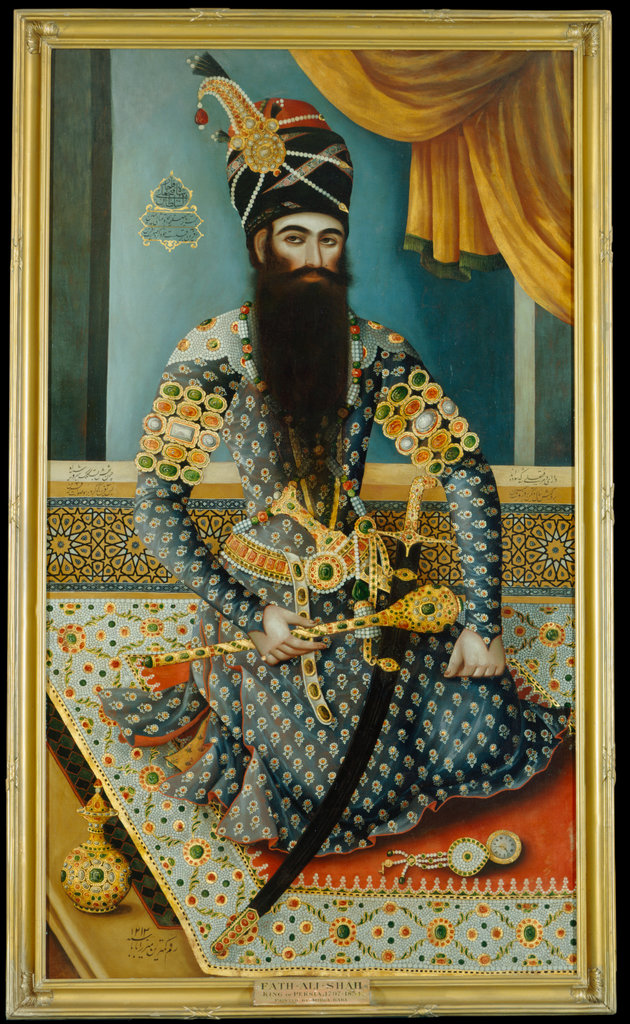
Upon Agha Mohammad Khan’s assassination, Baba Khan declared himself the heir to the Qajar throne and left Shiraz for Tehran, where key figures, including Agha Mohammad Khan’s grand vizier, quickly pledged their allegiance to him. This swift move to Tehran and the securing of allegiance from influential Qajar members were crucial in Baba Khan’s successful claim to the throne. His ascent was not without challenge, however, as there were other claimants, including his youngest uncle, Aliqoli Khan, who rushed back in a bid to claim the throne for himself. Aliqoli Khan’s challenge was quickly neutralized when Baba Khan entered Tehran, and through a display of force, Baba Khan secured his position and was crowned as Fath Ali Shah.
Fath Ali Shah’s reign (1797–1834) marked a significant period in Qajar Iran, characterized by intense diplomatic activities, cultural patronage, and military confrontations, particularly with Russia. He ascended the throne after the assassination of Agha Mohammad Khan, his uncle, and navigated through the early challenges of his reign, including consolidating power and quelling various rebellions. His rule saw the creation of many visual portrayals of himself and his court, aimed at glorifying the crown and linking his rule to the ancient Persian empires through rock reliefs in regions like Ray, Fars, and Kermanshah.
Fath Ali Shah’s Reign: Cultural Flourishing Amid Territorial Loss
Fath Ali Shah’s tenure was also marked by significant territorial losses to Russia through the Russo-Persian Wars (1804–1813, 1826–1828), which led to the irrevocable cession of Iran’s northern territories, including modern-day Georgia, Dagestan, Azerbaijan, and Armenia. These losses were formalized in the treaties of Gulistan (1813) and Turkmenchay (1828), which also granted Russia significant rights within Iran.
The Shah was known for his cultural contributions, significantly influencing Persian arts, particularly in portraiture and large-scale oil painting. This patronage of the arts was part of a broader effort to enhance the prestige of the Qajar dynasty and project an image of royal authority and continuity with Persia’s imperial past. His reign also featured the expansion of the Qajar bureaucracy and military, though these efforts were often undermined by economic difficulties and the challenges of maintaining control over the diverse and expansive Iranian territory.
In the end, Fath Ali Shah’s legacy was one of decline, marked by territorial losses to Russia and a growing national debt.
It was his successor, Nasir al-Din Shah, who would preside over what many consider the zenith of Qajar power, albeit a fragile one.
Nasir al-Din Shah: Modernization and the Prelude to Reform
Nasir al-Din Shah inherited a troubled empire in 1848. Fath Ali Shah’s reign had been marred by internal power struggles, crippling wars with Russia, and a burgeoning debt owed to European powers. Despite these challenges, Nasir al-Din Shah possessed qualities that would prove crucial in navigating a complex geopolitical landscape. Unlike his more flamboyant predecessors, he was a shrewd and cautious leader. He understood the limitations of Iran’s military power and adopted a more diplomatic approach with the encroaching European powers. Recognizing the need for reform, he also initiated a limited modernization program, establishing European-style schools, modernizing the military to some extent, and attempting to centralize control over the provinces.
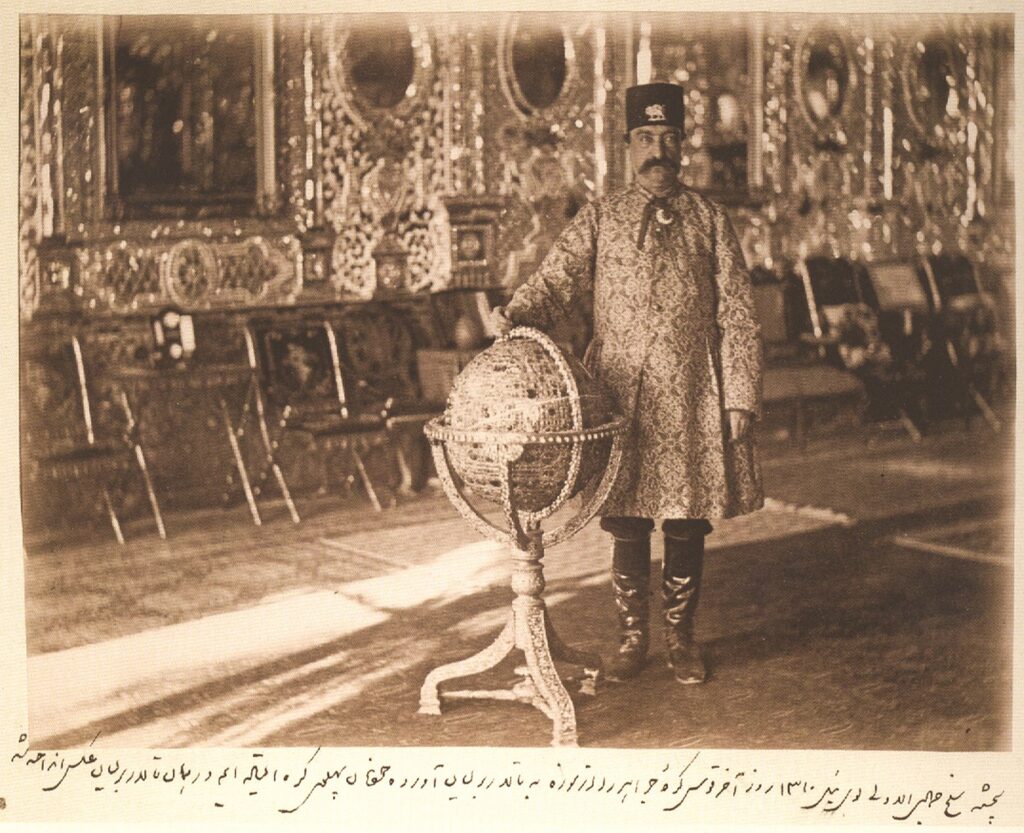
Despite the appearance of stability, Iran under Nasir al-Din Shah was a society in flux. The seeds of change sown during this period would eventually lead to the downfall of the Qajar dynasty. Exposure to Western ideas of democracy and nationalism fueled intellectual movements that challenged the absolute power of the Shah. Growing resentment of the common people towards foreign exploitation and the Qajars’ perceived incompetence would erupt in future rebellions.
It was also during Nasir al-Din Shah’s reign that the first movements toward democracy and liberation began. In the first episode of our podcast, we tell you the story of how outsourcing the rights to Persian Tobacco led to the first mass civic movement of the Persians. A movement that ultimately led to the creation of Persia’s very first parliament.
Listen to our first episode here.
Empire at a Crossroads: The Qajar Dynasty’s Complex Legacy
The Qajar Dynasty’s nearly 140-year rule over Iran is a period marked by contradictions and complexity. From its inception under the brutal yet unifying reign of Agha Mohammad Khan Qajar to the fragile zenith of Nasir al-Din Shah’s era, this epoch witnessed Iran’s transformation amidst the forces of internal strife and external pressures. The dynasty’s legacy is characterized by both its initial efforts to consolidate a fractured nation and its eventual role in the nation’s decline, underscored by territorial losses, economic hardships, and a growing awareness among Iranians of their country’s potential for reform and modernization.
The story of the Qajar dynasty is one of an empire that rose from the chaos of a broken system, striving for greatness but ultimately faltering under the weight of its ambitions and the changing tides of global politics. It was a time when Iran stood at the crossroads of tradition and modernity, facing challenges that would shape its path forward. Despite their shortcomings, the Qajars contributed to the cultural and political discourse of Iran, setting the stage for the subsequent movements that would seek to redefine the nation’s identity and sovereignty.

